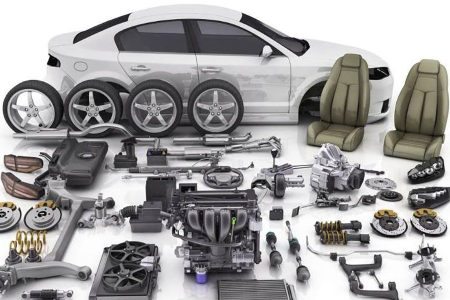The interior of a car is just as important as the exterior when it comes to the overall driving experience. It is the place where you will spend most of your time while driving, so it is essential that it is comfortable, functional, and aesthetically pleasing. In this text, we will take a closer look at the various components that make up a car’s interior and how they contribute to the overall driving experience.
Different elements of car interior and their importance for the driving experience
One of the most important elements of a car’s interior is the seating. The seats should be comfortable and supportive, as you will be sitting in them for long periods of time. They should also be adjustable, so you can find the perfect driving position. Many modern cars have power-adjustable seats, which allow you to easily adjust the height, lumbar support, and angle of the seat using buttons or a joystick. Some seats also come with heating and ventilation features, which can be a great comfort during long drives.
The dashboard is another crucial element of a car’s interior. It is the control center of the car, where you will find the instrument panel, the infotainment system, and the climate control. The instrument panel displays important information about the car’s performance, such as the speed, fuel level, and engine temperature. The infotainment system, on the other hand, is responsible for providing entertainment and connectivity features, such as music, navigation, and hands-free calling. The climate control system allows you to adjust the temperature and airflow inside the car.
The steering wheel is another important part of a car’s interior. It is the primary interface between the driver and the car, and it should be comfortable and easy to use. Many modern cars come with steering wheels that are adjustable for both height and reach, allowing you to find the perfect driving position. Some steering wheels also have buttons or controls that allow you to access certain features of the car, such as the infotainment system or the cruise control, without taking your hands off the wheel.
A car’s interior also includes storage spaces and compartments where you can keep your belongings while driving. These can range from small compartments in the dashboard or doors to larger spaces under the seats or in the trunk. Many modern cars also have features such as a glove box, cup holders, and charging ports to make it easier to keep your devices charged and within reach while driving.
Materials – what to choose from
Another important aspect of a car’s interior is the materials and finishes used. The materials should be durable and easy to clean, as the interior of a car can get dirty and worn over time. Leather and synthetic leather are popular choices for car interiors, as they are durable and easy to clean.
However, they can be expensive and may not be suitable for all climates. Fabric or cloth seats are another option, and they tend to be more affordable and comfortable, but they may not be as durable as leather or synthetic leather.
The lighting inside a car is also an important consideration. Proper lighting can improve visibility and make the interior of the car feel more welcoming and comfortable. Many modern cars come with ambient lighting, which allows you to adjust the color and intensity of the lights inside the car. Some cars also have features such as reading lights or footwell lights, which can be useful for illuminating specific areas of the car.
Best tips for car interior
In conclusion, the interior of a car plays a significant role in the overall driving experience. It should be comfortable, functional, and aesthetically pleasing.
The seating, dashboard, steering wheel, storage spaces, materials and finishes, and lighting are all important considerations when designing a car’s interior. By paying attention to these elements, car manufacturers can create interiors that enhance the driving experience and make it more enjoyable for the driver and passengers.
In recent years, there has been a push towards creating more sustainable and eco-friendly car interiors. Many car manufacturers are using recycled materials and eco-friendly fabrics in their interiors to reduce their environmental impact.
For example, some cars now use recycled plastic bottles or recycled leather for their seats, which helps to reduce waste and conserve natural resources. In addition, many car manufacturers are also using plant-based materials, such as natural fibers or bio-based plastics, in their interiors.
These materials are renewable and biodegradable, which makes them a more sustainable choice for car interiors. As consumers become more environmentally conscious, we can expect to see more car manufacturers incorporating sustainable materials into their interiors in the future.









